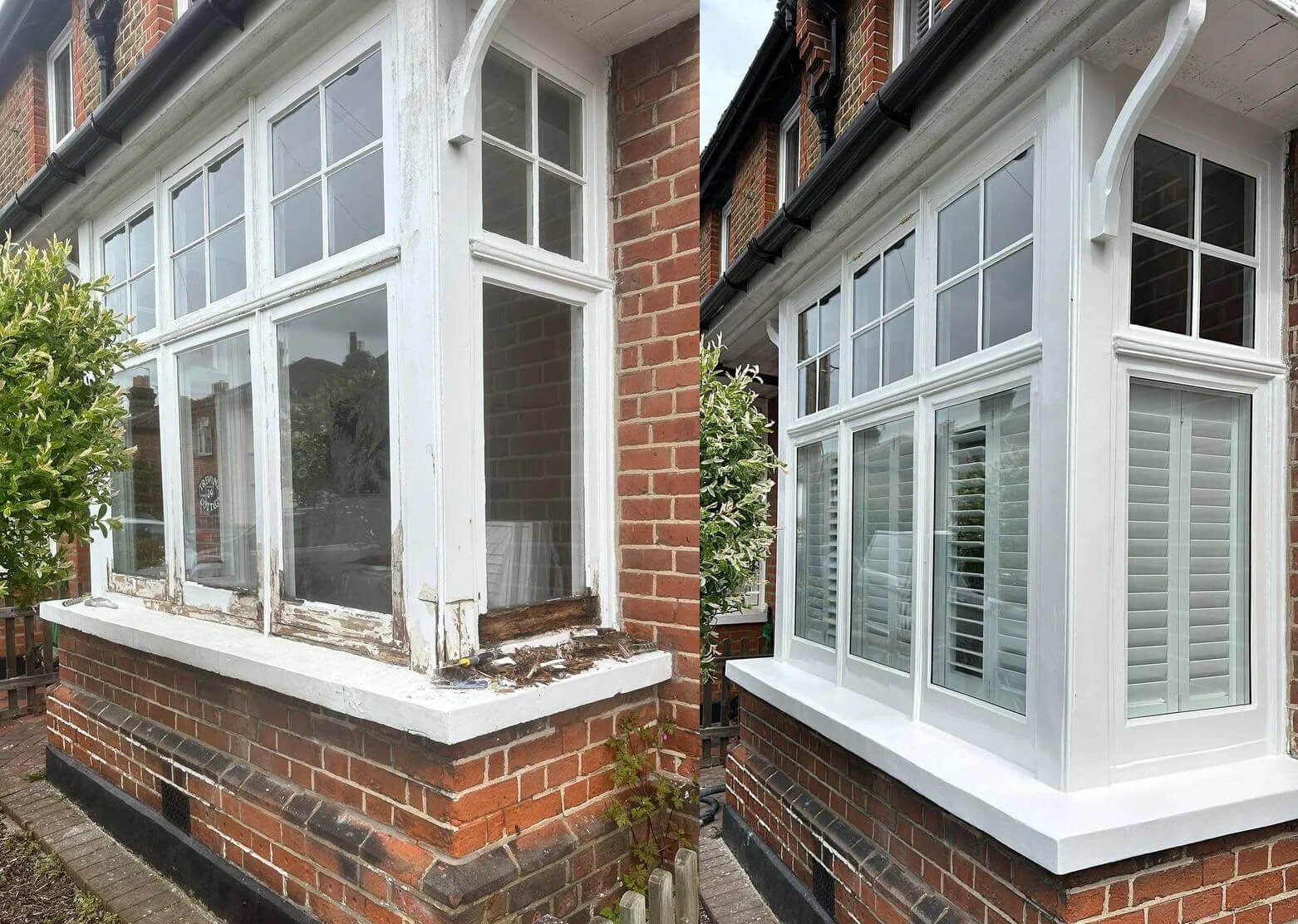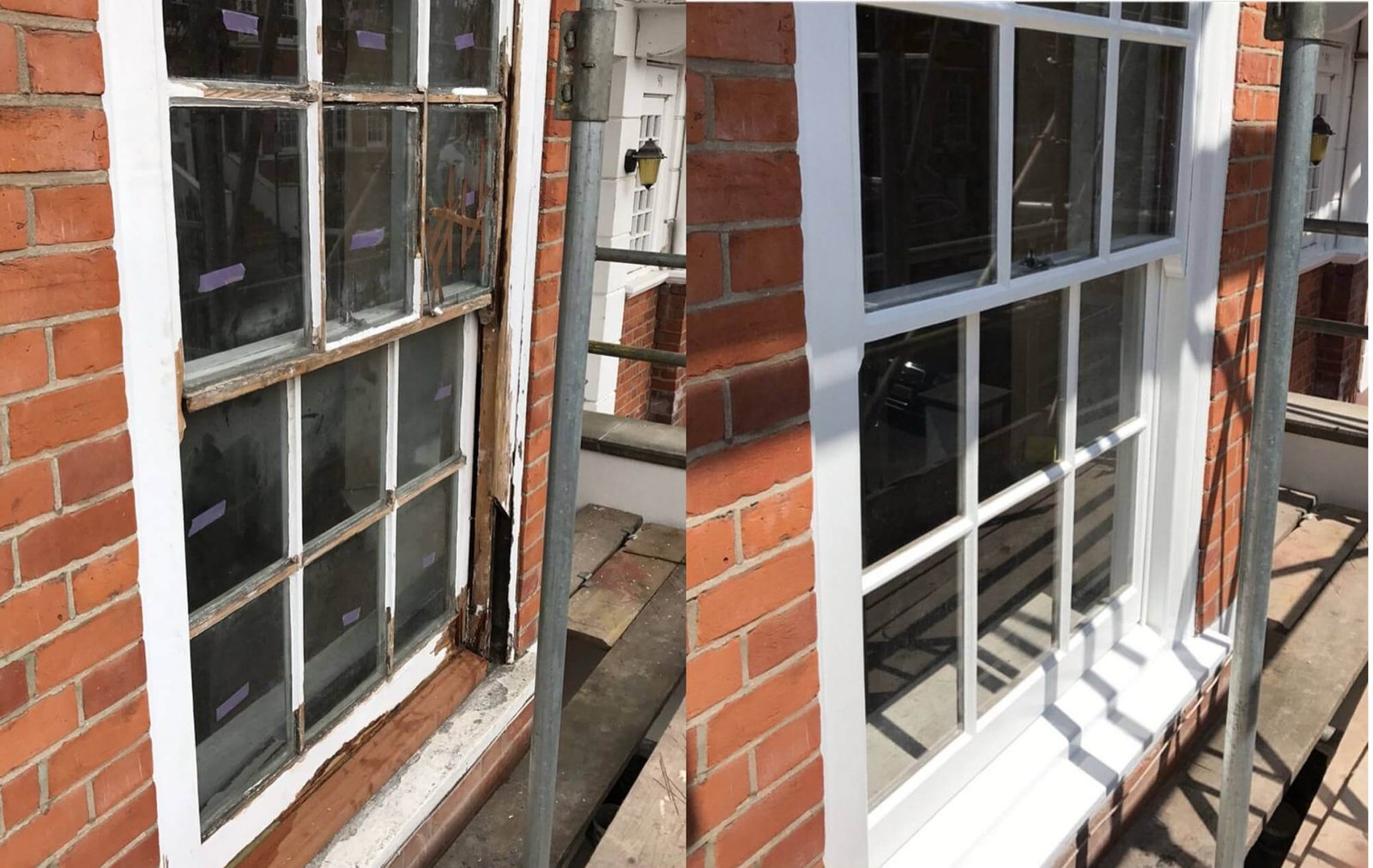
Listed property and Conservation area window restoration
Grade II Listed & Conservation
Due to England’s rich and well-preserved history, the country has a large amount of listed properties dating back many centuries. If you’re thinking of buying a listed property, or already living in one, there are some extra considerations when carrying out building or restoration work due to the laws which protect these buildings in the UK.

As a result, owners have slightly fewer options available to them and may have to apply for planning permission when completing a range of work. For works which will significantly affect the aesthetic of the property, permission is required, whilst like-for-like restoration work on features like traditional windows generally does not require it.
What are listed properties?
Listed buildings are deemed of special architectural and/or historical interest. Most buildings constructed prior to 1800 are likely to be listed, with the majority coming under the Grade II listed category (91.7%). Grade I listed buildings are classified as of exceptional interest and makeup just 2.5% of the total.
With around 400,000 in the UK, preservation of the original character of the listed building is the key aim of local governments. Planning rules, whilst varying regionally, work to achieve this aim.
This is why owners of listed buildings are slightly more restricted in terms of their options when carrying out work on a listed property and may have to apply for planning permission for certain types of work.
What is a conservation area?
Below the level of listed properties is also the Conservation Area category where rules are a little less strict. Unlike listed properties, conservation areas apply to wider geographic areas of historic/architectural interest and could be a whole village, for example, or a historic town centre. There are currently over 10,000 conservation areas in the UK.
Rules in conservation areas are generally more relaxed than for listed properties, and planning permission requirements relate mostly to the demolition of buildings rather than just minor alterations.
Replace or repair Grade 2 listed windows?
It is Historic England’s strong recommendation to go for restoration over replacement wherever possible. As well as benefiting the homeowner with cost savings, it also helps maintain the original character of the listed property, contributing to the local area as a whole as well as the resale value of the property.
Other benefits that come from restoration of existing windows over replacement is the fact that the wood used in historic windows is generally of a high quality. Often Baltic pine and of an older age than trees felled in modern timber practice it therefore has less internal sap making it durable and more resistant to issues like mould.
When is planning permission required?
Permission is generally required on any work which will significantly alter the aesthetics of the listed building. Historic England state, “you will need Listed Building Consent for all work to a listed building that involves alterations, extensions or demolition and will affect its character as a building of special architectural or historic interest”.
This would apply to things like window replacement which included frames and glass, as well as significant changes to the façade of a property. It is recommended that advice from your local planning authority is sought for both listed buildings and conservation area buildings in advance of any work to check it is compatible with regulations.
Contact points for making changes to a listed building and planning permissions can be found here.
What work can I carry out on a grade II listed property?
Restoration and maintenance work on existing windows is not generally classed as needing permission. This includes things like redecoration work, draught-proofing and making good of specific areas of rot in timber frames.
Below includes Surrey Sash services which do not require permission on grade II listed property:
Remedial work on window frames and sills:
We provide a range of remedial services for wooden windows, frames and sills on listed buildings including step by step restoration of:
- Rotting wood on either sash windows
- Flaking and cracking paint
- Rotting wooden window frames and sills
Restoration work such as this is a highly cost-effective alternative to more invasive window replacement works and, on listed buildings, is of particular value.
Draught-proofing of sash windows:
Here at Surrey Sash we also offer innovative draught-proofing solutions for your sash windows. With draught seals hidden to the eye and therefore not affecting the aesthetics of the period property whilst greatly improving the thermal efficiency of the window system.
Do I need permission to install double glazing?
While it is always worth checking with local planning authorities, generally alteration of window glass itself will require consent on a listed building. This does not apply to secondary glazing units which are fitted discreetly to the inside of a window and, as not deemed a permanent alteration, don’t require planning permission.
The retrofitting service described below is often the best solution for windows on listed buildings which are thermally inefficient. The Fineo glass is ultra thin profile too- usually a requirement for matching the previous aesthetics on a listed building however the planning permission is required for this course of work.
In conservation areas the guidance changes slightly and retrofitting new glazing is easier, it is also not necessary for it to be as thin profile as in listed buildings giving more choice. If the work isn’t facing a public area or street it’s also possible no permissions will be required.


